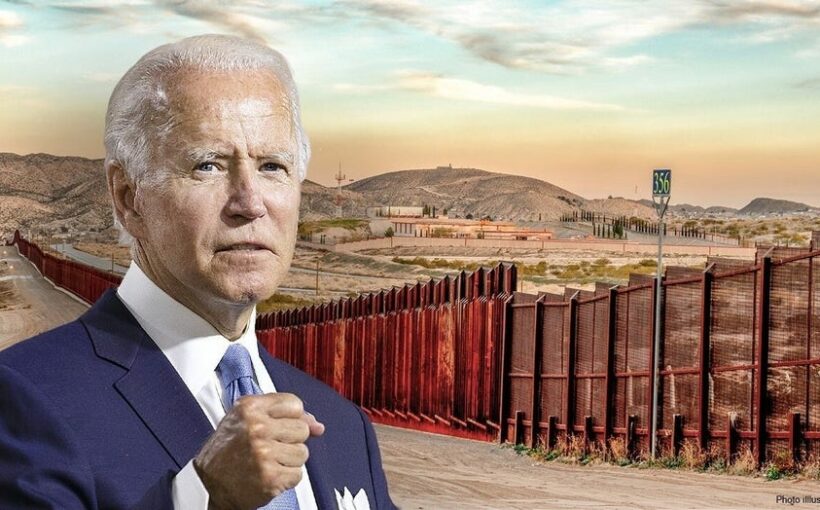Biden facing pressure over lifting Title 42 border policy
Fox News congressional correspondent Chad Pergram has the latest as Senate Republicans call for an amendment on Title 42.
Border security is national security. In the last thirty years, law enforcement officials have discovered more than 230 cross-border tunnels used to smuggle drugs, weapons, and even humans beneath the Mexico-U.S. border, and there are likely many more still undiscovered.
On Tuesday, the House of Representatives passed my bill, the DHS Illicit Cross-Border Tunnel Defense Act, to finally seal them.
Since President Biden took office in January 2021, U.S. Customs and Border Protection (CBP) has had over 2.2 million migrant encounters along the southwest border.
Due to the sheer number of migrants flooding across the border, CBP personnel, especially U.S. Border Patrol Agents, are often being diverted from their essential jobs to process migrants, most of whom crossed the United States-Mexico border illegally between ports of entry. With Border Patrol Agents occupied with other tasks and not patrolling the border, the security of our southwest border has been crippled—and cartels are taking full advantage.
In addition to the record number of migrant encounters, CBP has been interdicting increasing quantities of illegal narcotics, especially methamphetamine, fentanyl, and other fentanyl-laced drugs along the border.
Last year, the United States reached a tragic record of over 105,000 drug overdose deaths in a one-year period—the highest number of drug overdose deaths ever recorded in the United States.
Additionally, according to the Centers for Disease Control and Prevention (CDC), fentanyl is now the leading cause of death of Americans aged 18 to 45 years old. This means fentanyl has killed nearly twice as many people as COVID-19, car accidents, cancer, and suicide.
Mexico is the primary source of fentanyl and synthetic opioids entering the United States. Of course, smuggling drugs across the border comes with the risk of packages being seized by our border law enforcement agencies.
To minimize this risk, in 1989, the Sinaloa Cartel built the first ever “narco” tunnel. Back then, narco tunnels were short and unsophisticated.
Over time, the cartels learned from previous mistakes and began to build longer and more sophisticated tunnels – complete with lights, ventilation systems, and railroad carts – to facilitate the movement of drugs and other illicit commodities like people, bulk cash, and weapons.
FILE – YUMA, ARIZONA – DECEMBER 07: Immigrant men from many countries are taken into custody by U.S. Border Patrol agents at the U.S.-Mexico border on December 07, 2021 in Yuma, Arizona.
(John Moore/Getty Images)
CBP’s tunnel technology program has matured over several years. Under the direction of the U.S. Border Patrol, this program has been testing and acquiring technologies that can do three essential things: predict tunnel locations, detect and project the path of tunnels, and confirm a tunnel’s existence and location through mapping and measurements.
As CBP develops enhanced capabilities that will enable detection of tunnels along the border, drug cartels have become emboldened, creating more elaborate and harder to detect tunnel systems. Without this critical legislation, CBP lacks the ability to scale tunnel interdiction and remediation operations.
The DHS Illicit Cross-Border Tunnel Defense Act addresses this issue by requiring CBP to develop a counter-tunnel operations plan that would address risk-based criteria for interdicting and remediating illicit cross-border tunnels, processes for sharing information on illicit tunnels, key indicators of tunnel construction to educate field personnel, and an assessment of technology and personnel needs. Additionally, this legislation would authorize money for CBP for counter tunnel interdiction and remediation operations.
With the surge of illicit border activity both aboveground and underground, CBP needs the resources to combat illicit cross-border tunnels to secure our homeland and protect our national security. Passage of this legislation will increase the security of our nation by disrupting and dismantling cartel smuggling operations and safeguarding American communities from the likes of illegal narcotics such as fentanyl.
This is a good step in the right direction, but we have a long way to go in the fight to secure our border. I am proud to see this bill pass the House, and I will continue championing this effort until it is signed into law.
Source: Read Full Article




